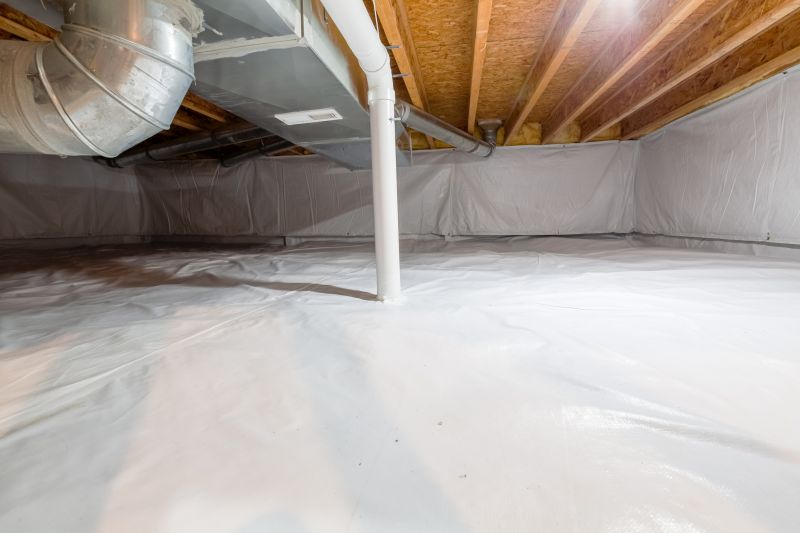Crawlspace Waterproofing and Encapsulation
Crawlspace encapsulation is a comprehensive process designed to improve indoor air quality, prevent moisture damage, and enhance energy efficiency. In Greenville, Ohio, many homes benefit from this service by creating a sealed, conditioned crawlspace environment that reduces common issues such as mold growth, wood rot, and pest infestations.
Encapsulation effectively prevents moisture intrusion, reducing the risk of mold and structural damage caused by excess humidity.
Sealing the crawlspace helps maintain consistent indoor temperatures, leading to lower energy bills and improved comfort.
A sealed crawlspace minimizes the entry of dust, allergens, and pollutants, contributing to healthier indoor air.
Encapsulation creates a barrier that deters pests such as rodents and insects from entering the home.

A finished crawlspace with sealed barriers and insulation, ensuring protection from moisture and pests.

Interior view showing vapor barriers and insulation installed for optimal moisture control.

Completed project featuring sealed vents and insulation, enhancing energy efficiency.

Close-up of vapor barriers and sealing materials used in encapsulation process.
Neglecting crawlspace encapsulation can lead to significant issues, including increased energy costs, mold growth, and structural deterioration. Studies indicate that unsealed crawlspaces can contribute to up to 15% higher energy bills due to heat loss. Moreover, moisture problems can cause mold spores to circulate within the home, impacting respiratory health. Pests and wood rot are additional dangers associated with unprotected crawlspaces, potentially leading to costly repairs.
| Benefit of Encapsulation | Risks of Not Encapsulating |
|---|---|
| Moisture Prevention | Increased mold growth and wood rot |
| Energy Savings | Higher heating and cooling costs |
| Improved Air Quality | Presence of allergens and mold spores |
| Pest Deterrence | Infestation and damage |
| Structural Integrity | Potential foundation issues |
| Cost Savings | Expensive repairs due to neglect |
| Home Value | Decreased property valuation |
| Health Benefits | Respiratory problems from mold and allergens |

